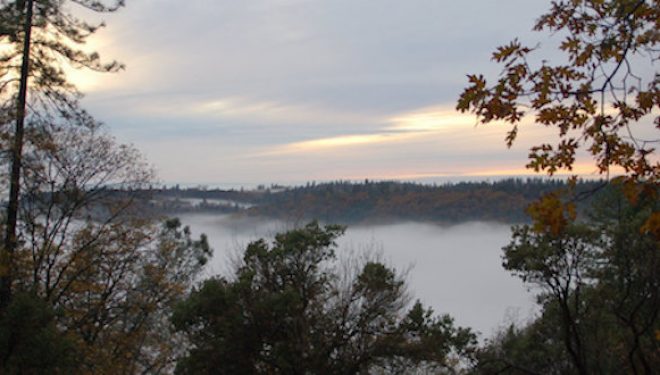
By Chris Carrillo and Derek R. Hoffman
The California Department of Water Resources (DWR) recently announced it would increase the previously planned 2020 water deliveries from the State Water Project (SWP) from 15 percent to 20 percent. DWR was able to increase the water delivery allocations to 29 agencies (SWP Contractors) due to the Sierra snowpack conditions resulting from above-average precipitation in May. The U.S. Bureau of Reclamation (Bureau) also recently announced that water allocations from the Central Valley Project (CVP) are increasing at a rate of 5 percent.
Background
The SWP is the largest state-built water and power project in the nation, with over 700 miles of canals and pipelines, 20 pumping plants, 4 pumping/generating plants, 5 hydro-electric power plants, 33 storage facilities and 21 reservoirs and lakes. The SWP has a total reservoir storage capacity of 5.8 million acre-feet, in addition to the water already in the delivery system and delivers an average of 2.4 million acre-feet of water annually through its system.
Construction of the SWP started in the 1960s with the first water deliveries to the Bay Area in 1962 and into Southern California in 1972. The SWP has delivered over 70 million acre-feet of water since its first delivery in 1962. Today, the SWP delivers water to 29 SWP Contractors who in turn deliver water to over 23 million Californians and over 750,000 acres of irrigated farmland. The SWP also delivers water to other public agencies and provides water for wildlife and recreational uses. Approximately 70 percent of SWP deliveries are for urban use and 30 percent are for agricultural use.
The SWP Contractors take deliveries of water from the SWP, pursuant to long-term contracts (Water Contracts) that were entered into when the SWP was created. These Water Contracts obligate the SWP Contractors for the costs of constructing, operating and maintaining the SWP facilities, and for the water that is delivered to them through the SWP facilities. Although SWP Contractors are entitled to 4.2 million acre-feet of water, the SWP is only capable of deliveries on average of between 2.5 million and 3.5 million acre-feet of water.
2020 Annual Water Deliveries
Each October, the 29 SWP Contractors apply to the SWP for the following year’s water allocation deliveries, up to the maximum allocation authorized in their individual Water Contracts. Each December, DWR publishes the allocation amounts for the coming year. The annual water allocations are based on several factors, including: 1) historical water supply data, 2) current reservoir storage, and 3) amount of water requested by the SWP Contractors. After the annual allocation is made by DWR, DWR continues to monitor climatic conditions, reservoir levels and Sierra snowpack, and may adjust the allocations accordingly. An initial allocation of 10 percent was announced in December 2019 due to a very dry winter. This allocation was increased to 15 percent in January 2020. In May 2020, DWR announced an increase from 15 percent to 20 percent due to the above-average precipitation brought by the recent May storms.
2019 Dry Winter and 2020 May Storms
DWR reported that this year’s snowpack was the eleventh driest on record since 1950, and precipitation was the seventh driest on record since 1977. Despite the dry winter, May storms delivered 181 percent of average precipitation for the northern Sierra for this time of year allowing for DWR to slightly revise upward its allocation.
The Central Valley Project
The federal CVP, which is operated by the Bureau, delivers 7 million acre-feet of water on average each year to irrigate approximately 3 million acres of California lands, and supplies drinking water for more than 1 million households. The CVP has long-term agreements to supply water to more than 250 contractors in half of California’s 58 counties. Deliveries by the CVP include providing an annual average of 5 million acre-feet of water for farms; 600,000 acre-feet of water for municipal and industrial uses; and water for wildlife refuges and maintaining water quality in the Sacramento-San Joaquin Delta. The construction of the CVP helped propel California to becoming the largest agriculturally productive state in the country, providing 25 percent of the nation’s table food. California has led the nation in agricultural and dairy production for the last 50 years.
The Bureau’s recent adjustment in allocation results in water users on the west side of the San Joaquin Valley receiving a five percent increase in water allocation from 15 to 20 percent of their contracted amount. Municipal and industrial users saw a five percent jump to 70 percent of their contracted amount.
Conclusion and Implications
The recent announcements by the Department of Water Resources and U.S. Bureau of Reclamation are welcome news to water consumers throughout the state. While the recent spring storms helped to mitigate low snowpack conditions, total allocations remain disappointing for most State and CVP Contractors in response to remarkable dry conditions. The Contractors and the communities they serve continue to monitor SWP and CVP trends and to develop local projects and programs promoting resource conservation.




